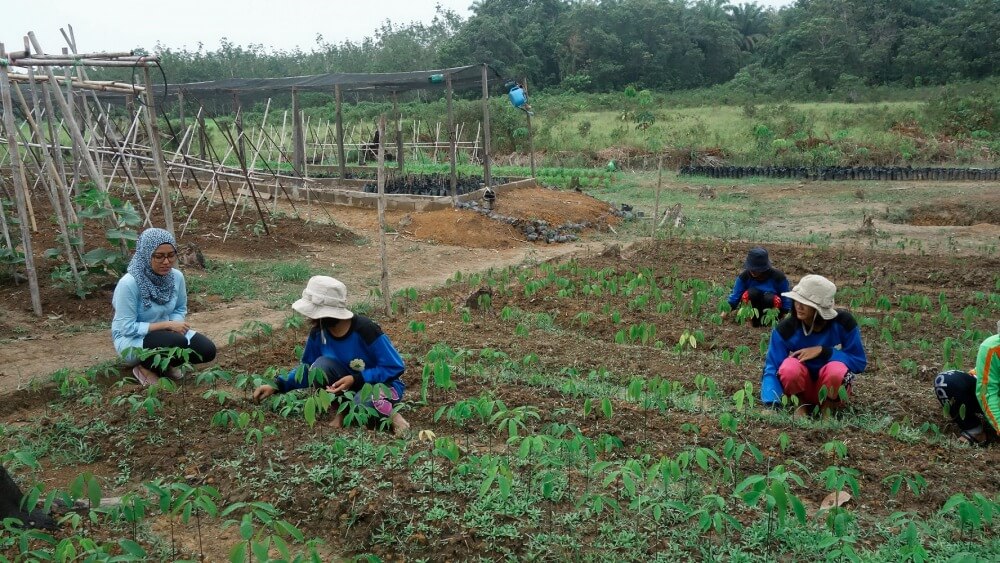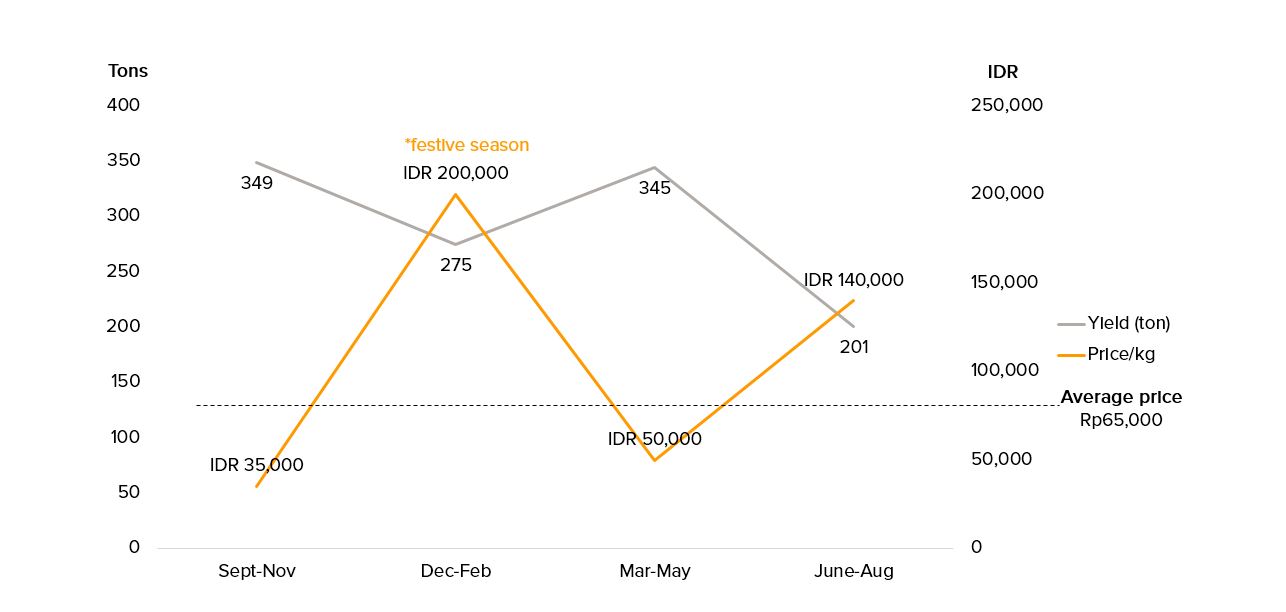
Kopernik recently participated in evaluating the impact of a training program for government officials on a market system development approach. As part of the government intervention to improve farmers’ income, the farmers in West Papua received a subsidy in the form of high-quality seeds. When planted, the seeds are said to produce more chili than the seeds that farmers currently cultivate or buy, hence increasing the farmers’ yield. The yield was indeed higher from the subsidized seeds, however, since the majority of chili farmers in this area harvested at the same time, higher supply saturated the local market resulting in a price drop and consequently reduced the farmers’ profit.
Secondary data shows that there is an inverse relationship between the price and the supply of chili in West Papua - the price spikes when the chili supply is low, and vice versa.
During the months of September to November, the supply is highest and the price is lower than the average price by more than 30%. While when the supply is lower from December to February and June to August, the price spikes. Note that the price increase may be amplified during December to February festive season when the demand is highest.
While the program to boost the productivity of farmers could be beneficial, it is equally important to consider profitability. When giving seed subsidies to boost farmers’ yield, organizations may need to avoid over-saturating the market or alternatively provide farmers with access to new markets to sell the extra yield.
Overlooking farmers' profitability may discourage farmers from adopting interventions that could otherwise be beneficial. An article by J-PAL suggested that agricultural extension services - a program model used to transmit information to farmers, may have low adoption in part because they typically focus on maximizing yields rather than maximizing farmers’ profits.
The ability to synchronize the improvement in yield with profitability that often relies on adequate market access is a recurring challenge in the agriculture development sector. Our earlier Kopernik Insight about the importance of market access to influence improved drying technology is another example. While these insights serve as good case studies to showcase the issue, the counter intervention may vary according to the local context and other factors in the value chain, for which further research is needed.
1 Harga Bahan Pangan di Manokwari Stabil. (2017, May 20).
2 Harga Cabai Rawit di Kota Sorong Turun. (2015, October 25).
3 Harga Cabai Rawit Merah di Papua Barat Paling Pedas. (2018, July 20).
4 Harga Cabai Rawit di Sorong Setara Ponsel Murah Meriah. (2017, January 7).
5 Kementrian Pertanian (2017, December 22). Statistik Harga Komoditas Pertanian 2017.
6 Kementrian Pertanian (2018, March 12). Statistik Pertanian Indonesia 2017.



